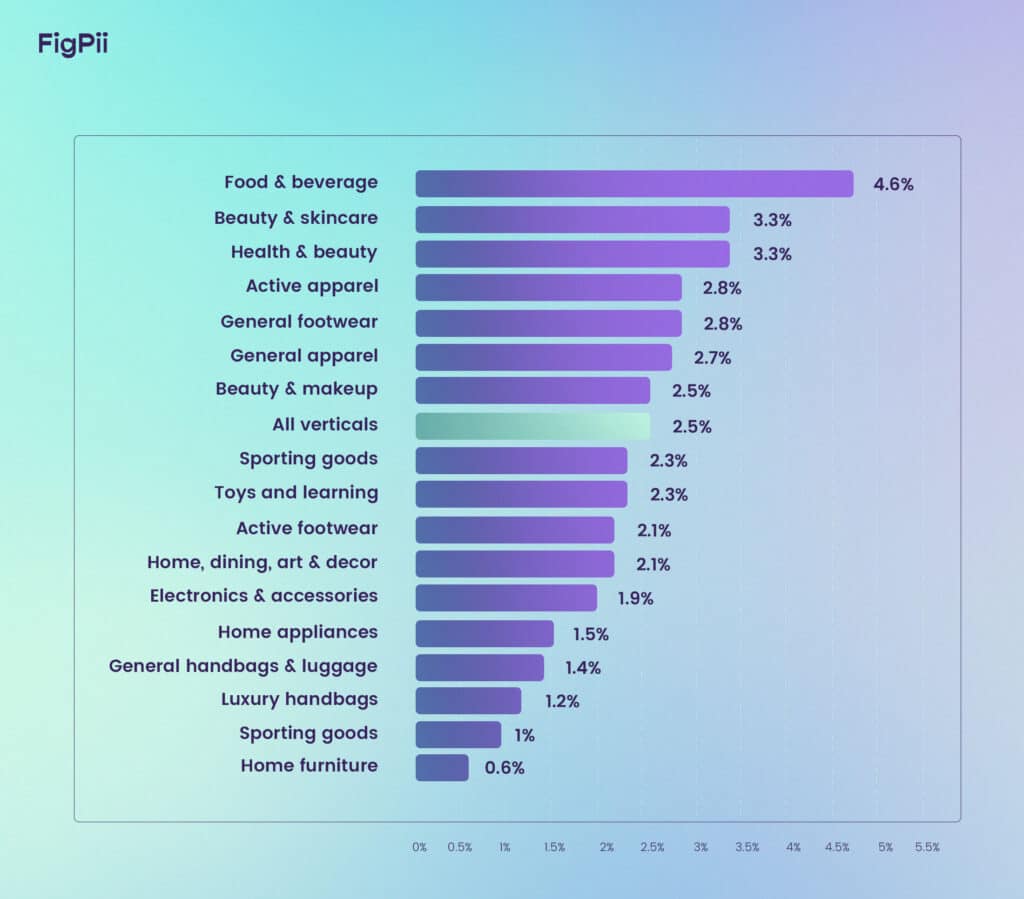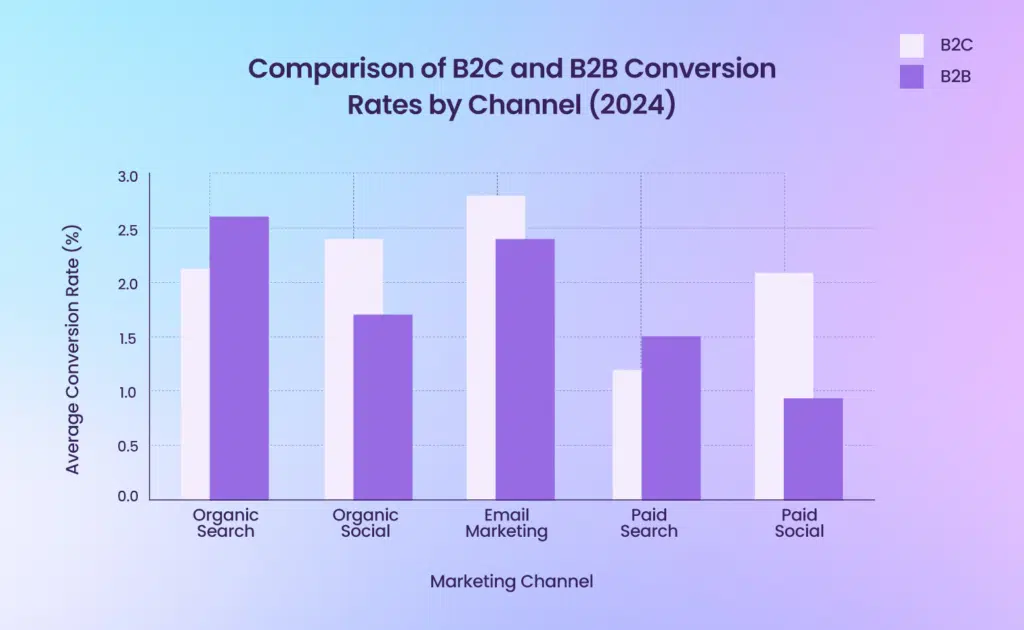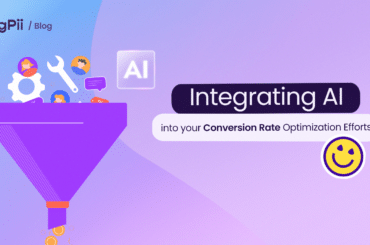It’s 2024, and everywhere you look, data and statistics on conversion rates are at the forefront of ecommerce marketing. Converting customers has become more challenging. Social media is a major player, with paid and unpaid influencers driving viral content.
Remember the days before 2024? Conversion wasn’t as challenging, with fewer channels to juggle and less competition. Now, you’re trying to figure it all out and how your small ecommerce store will thrive.
Before you run wild in your head, knowing the average website conversion rates for different marketing channels and understanding how these channels convert visitors into customers is a great place to start.
In this article, we’ll break down the average conversion rates for each channel. We’ll explore what influences these rates and share practical tips to help you improve your conversion rate optimization efforts.
What is Considered a Good Conversion Rate?
A reasonable conversion rate varies by industry and channel. Generally, a conversion rate of 2-5% is considered average. However, top-performing websites often achieve rates above 10%.
Factors like user intent, product type, and website quality can all impact what is considered a good conversion rate for your business.
When you focus on conversion optimization strategies, you can aim to increase conversions and outperform industry benchmarks.
Average Conversion Rate by Channel
Understanding how different marketing channels perform can help you optimize your strategy. Each channel has unique traits that affect how visitors convert on your site.
In this section, we’ll break down the average conversion rates for channels like organic search, paid search, social media, email marketing, direct traffic, and referral traffic.
Organic Search
Organic search conversion rates generally range from 2% to 4%, with specific benchmarks showing B2C businesses at 2.1% and B2B businesses at 2.6%.
Factors Affecting Conversion Rates
- Content Quality: High-quality, relevant content that matches user intent significantly boosts conversion rates.
- SEO Optimization: Effective use of keywords, meta descriptions, and backlinks improves search engine ranking.
- User Experience: Websites with easy navigation, fast load times, and mobile optimization tend to retain and convert more visitors.
- Search Intent: Aligning content with user search intent is crucial for higher conversions.
Tips for Improvement:
- Regularly test different versions of your landing pages to identify which elements, such as headlines, images, and CTAs, perform best.
- Use personalized product recommendations based on user behavior and search history.
- Ensure your CTAs are prominently displayed and clearly communicate the next step.
- Continuously improve your on-page SEO to attract high-intent visitors and create high-quality, relevant content that matches user search intent.
Paid Search
Paid search, or PPC, typically shows conversion rates around 3%, with variations between 2%and 3% for different campaigns. B2C conversion rates are generally lower at 1.2%, compared to B2B rates of 1.5%.
Key influencing factors
- High-quality, relevant ad copy that matches user queries increases the likelihood of conversions.
- Google’s rating of your ad’s relevance and quality affects your ad’s performance and cost.
- Ensuring the landing page matches the ad’s promise and provides a seamless experience is crucial.
- Effective budget allocation and bid management can enhance the visibility and performance of your ads.
Optimization Strategies for Paid Search
- Test different ad copies, headlines, and landing pages to find the most effective combinations.
- Utilize demographic and interest-based targeting to reach the right audience.
- Write compelling ad copies with strong, clear calls to action and ensure your landing page is closely aligned with the ad to maintain user interest.
- Regularly review and adjust your bids to optimize for the best performance.
Social Media
Social media conversion rates tend to be lower, averaging around 1.5%. For organic social media, B2C conversion rates are approximately 2.4%, while B2B rates are about 1.7%. Paid social media conversion rates show B2C at 2.1% and B2B at 0.9%.
Platform-specific insights
- Different platforms cater to different demographics, affecting conversion rates (e.g., Instagram skews younger, LinkedIn is more professional).
- Visual content such as images and videos performs better on platforms like Instagram and Facebook.
- Higher engagement rates on social platforms can lead to better conversion rates.
How to improve conversion on Social Media
- Test different types of posts, such as images, videos, and links, along with various ad creatives to see what resonates most with your audience.
- Use high-quality images and videos to capture attention and engage users.
- Actively engage with your audience through comments, likes, and direct messages.
- Leverage platform-specific ad targeting features to reach specific demographics and interests. Collaborate with influencers to leverage their audience and credibility.
Email Marketing
Email marketing continues to perform strongly, with conversion rates varying widely from 2.6% to 10.3%. B2C email marketing typically sees conversion rates around 2.8%, with B2B at 2.4%.
Effective practices to increase Email conversion
- Tailor emails to individual recipients based on their behavior and preferences to increase engagement.
- Regularly test different subject lines, content, and CTAs to see what drives the highest engagement.
- Include strong, clear calls to action that guide the reader on what to do next.
- Ensure emails are mobile-friendly, as many users read them on mobile devices. Segment your email list to send more targeted and relevant messages.
Direct Traffic
Direct traffic often includes repeat visitors and brand-aware users, leading to an average conversion rate of about 3.3%.
Behavioral insights on direct traffic
- Loyalty: Direct traffic often comprises loyal customers already familiar with the brand.
- Brand Awareness: Visitors coming directly to the site usually have high brand awareness and a strong intent to convert.
Conversion tactics for direct traffic
- Ensure a seamless and intuitive user experience to retain and convert visitors.
- Implement loyalty programs to incentivize repeat purchases.
- Offer exclusive promotions or discounts to direct traffic and encourage conversions.
- Maintain consistent branding across all touchpoints to build trust and recognition.
Referral Traffic
Referral traffic, which can be from other websites linking to yours, your email campaigns, affiliate links, online communities, etc, has an average conversion rate of approximately 2.9%.
Factors Influencing Referral Traffic
- High-quality referring sites tend to drive more engaged and relevant traffic.
- Referrals from content that aligns well with your offering tend to convert better.
- Referrals from trusted sources can enhance the credibility of your site.
How to Improve Website Conversion Rate for Referral Traffic
- Build relationships with reputable sites and blogs to gain high-quality referrals.
- Contribute valuable content to other sites to drive traffic back to your own.
- Implement referral programs to encourage word-of-mouth marketing.
- Ensure referral traffic lands on well-optimized and relevant pages to improve conversion chances.
Conversion Rates by Channel for B2C and B2B
|
Channel |
B2C Conversion Rate (%) |
B2B Conversion Rate (%) |
|
Organic Search |
2.1 |
2.6 |
|
Organic Social |
2.4 |
1.7 |
|
Email Marketing |
2.8 |
2.4 |
|
Paid Search |
1.2 |
1.5 |
|
Paid Social |
2.1 |
0.9 |
Comparison Analysis
- Organic Search: B2B has a higher conversion rate (2.6%) compared to B2C (2.1%). This might be due to the targeted and specific nature of B2B search queries.
- Organic Social: B2C conversion rates (2.4%) are higher than B2B (1.7%), likely because social media platforms are more consumer-focused.
- Email Marketing: B2C (2.8%) and B2B (2.4%) perform well, with B2C slightly ahead, possibly due to personalized consumer engagement.
- Paid Search: B2B has a higher conversion rate (1.5%) than B2C (1.2%), indicating more effective targeting and higher intent among B2B searchers.
- Paid Social: B2C outperforms B2B significantly (2.1% vs. 0.9%), reflecting the consumer-oriented nature of social media advertising.
Factors Affecting Website Conversion Rate
- User Experience (UX): A well-designed, easy-to-navigate website encourages visitors to convert.
- Website Speed: Faster loading leads to better user engagement and higher conversion rates.
- Quality of Traffic: Attracting visitors genuinely interested in your products or services increases conversions.
- Landing Page Effectiveness: Well-optimized landing pages matching visitors’ expectations improve conversion rates.
- Mobile Optimization: Ensuring your site works well on mobile devices is crucial, as many users browse on their phones.
- Trust and Credibility: Building trust through reviews, testimonials, and secure payment options can boost conversion rates.
Conclusion
In this article, we have explored the average conversion rates across various marketing channels. Understanding these metrics allows you to see which channels are performing well and where there might be room for improvement. Each channel has its own set of factors that influence conversion rates, and by tailoring your strategies to these unique traits, you can enhance your marketing efforts and achieve better results.




